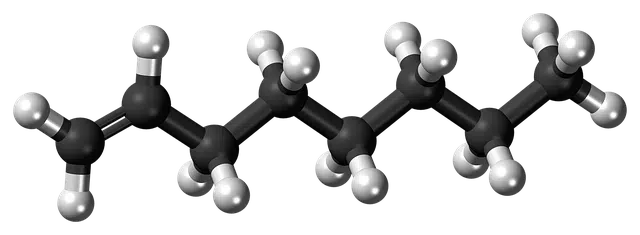
Due to their characteristics, alkenes are alkanes.
Unsaturated hydrocarbons that have molecules with at least one carbon-carbon double bond are known as alkenes . These compounds are alkanes that, upon losing a pair of hydrogen atoms, begin to have a double bond formed by two carbons.
It is important to mention that the notion of alkenes is not included in the dictionary of the Royal Spanish Academy ( RAE ). However, the concept of alkanes does appear.
Characteristics of alkenes
Alkenes used to be known as olefins , since the simplest compounds generate oils by establishing a reaction with a halogen. Alkenes, on the other hand, have different physical characteristics compared to alkanes because the carbon double bond changes the properties linked to acidity and polarity, for example.
Through different chemical reactions, alkenes are transformed into different organic compounds. These reactions can be pericyclic mechanisms, the action of free radicals or electrophilic additions. Below we look at these concepts in more detail.

Alkenes belong to the group of unsaturated hydrocarbons.
Reactions, radicals and additions
* chemical reaction : this is a phenomenon that is also known as chemical change and consists of a thermodynamic process (certain magnitudes undergo an evolution) in which one or more substances undergo a transformation that changes their bonds and structure molecular to give rise to new substances, which are called products . Iron oxide, for example, is formed through a chemical reaction between iron and oxygen in the air;
* pericyclic reaction : this is a concept belonging to organic chemistry, and which serves to define a reaction in which a cyclic geometry is seen in the transition state. It is possible to classify this type of reaction as electrocyclic, sigmatropic, cycloaddition, chelotropic or group transfer . It is known that they are usually in chemical equilibrium, that is, no net changes in concentrations and activities are observed over time, although a shift in equilibrium in one direction can occur if the energy content of the product is considerably reduced;
* free radical : this chemical species, whose action can collaborate with the transformation of alkenes into other compounds, can be organic or inorganic and is currently called simply radical . It is characterized by having a minimum of one unpaired electron (also called unpaired electron , it is one in which no compensation of its spin is appreciated by another electron that has it opposite). The formation of the radical takes place when a molecule undergoes a homolytic cleavage in the middle of a chemical reaction and is usually very unstable, which is why it lives for only a few milliseconds but is considerably reactive ;
* electrophilic addition : a reaction of this type is characterized by the loss of a pi bond suffered by a chemical compound , thanks to which two new sigma bonds are formed. It is part of organic chemistry , more precisely in reaction mechanisms. The substrates that usually appear in an electrophilic addition have carbon-carbon double or triple bonds. Typically, this type of reaction is biomolecular or second order.
Examples of alkenes
Among the alkenes, we can mention ethylene , which is found in plants . When water is added to ethylene, it is possible to obtain ethanol . On the other hand, through a metal catalyst, a reaction can be carried out between ethylene and molecular hydrogen to obtain ethane .
Isobutylene is another alkene that is used in industry . With a branched structure, isobutylene is a colorless gas that is flammable when under normal temperature and pressure conditions.
